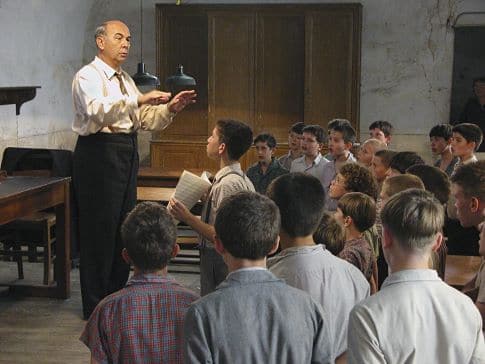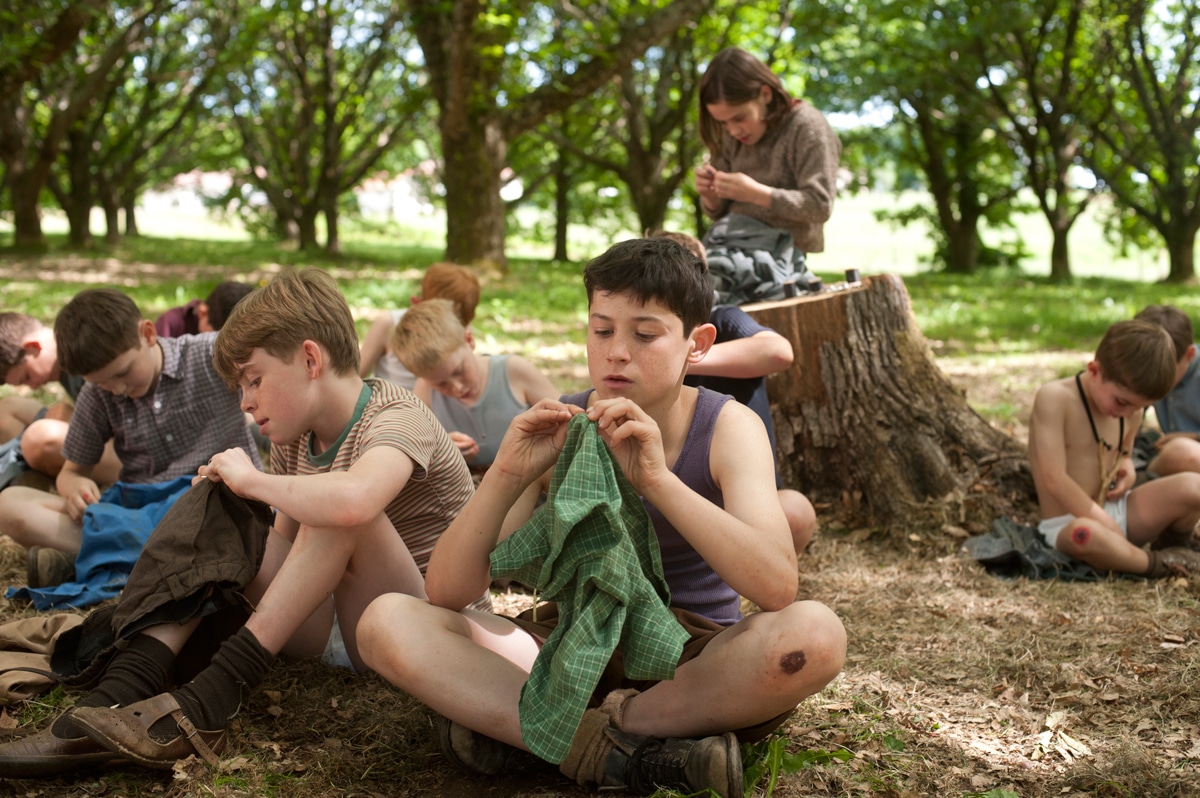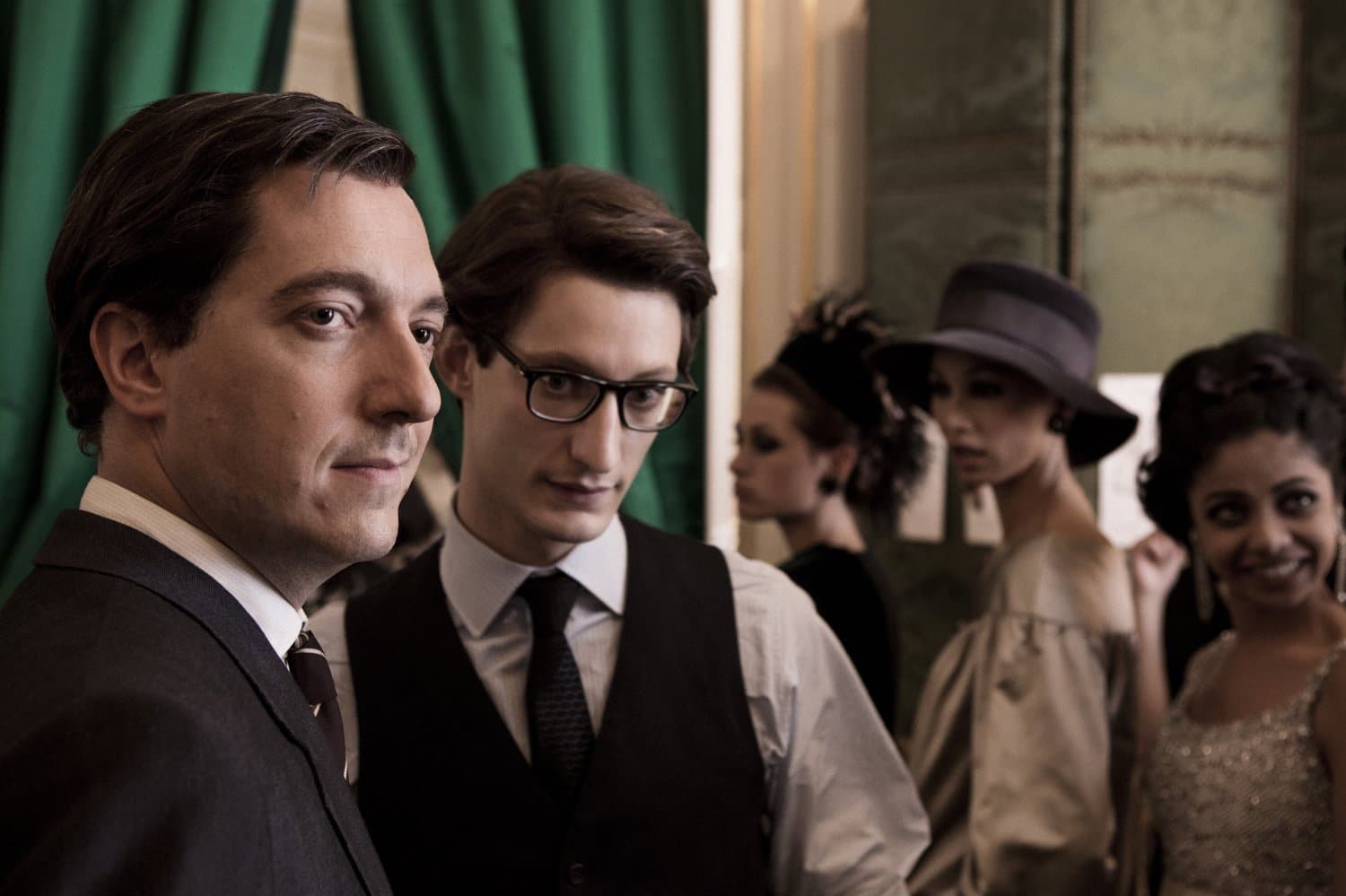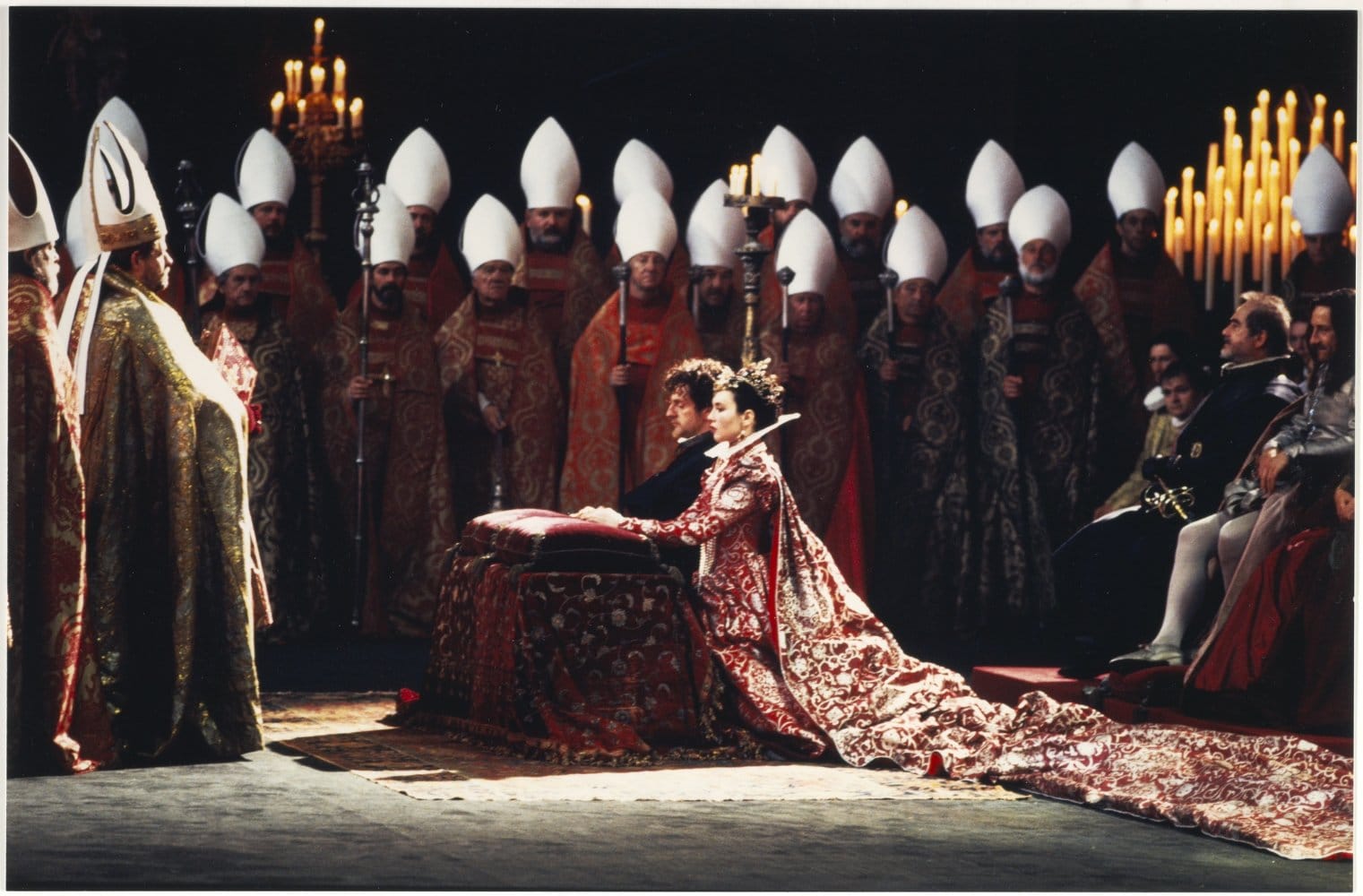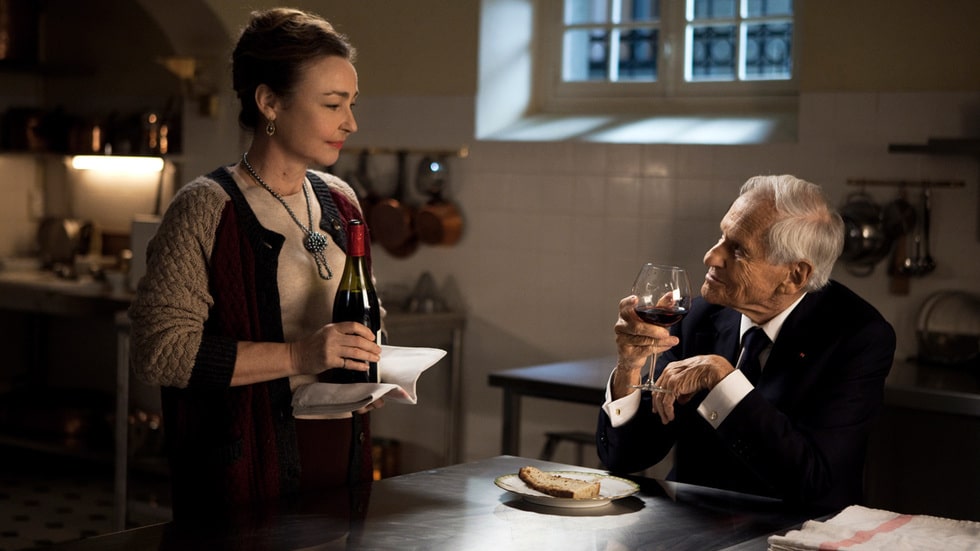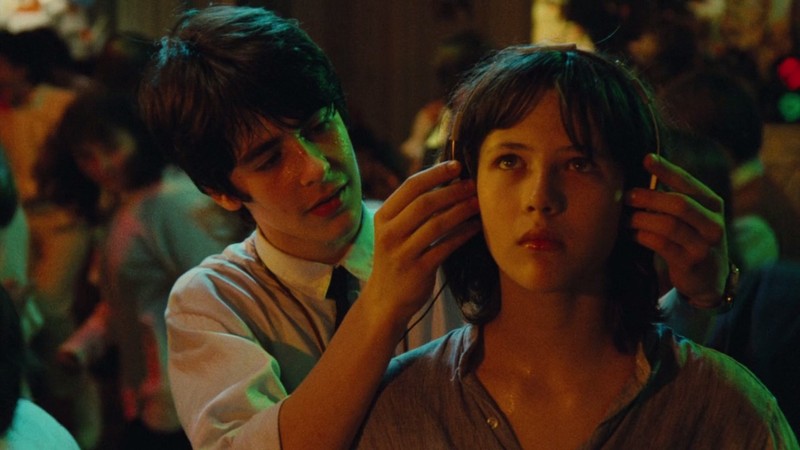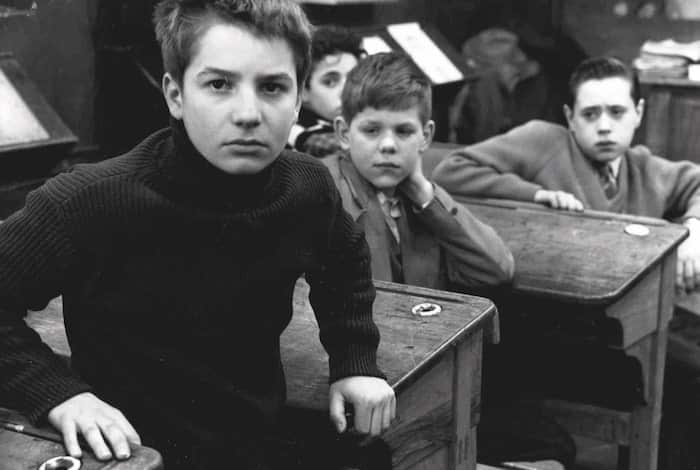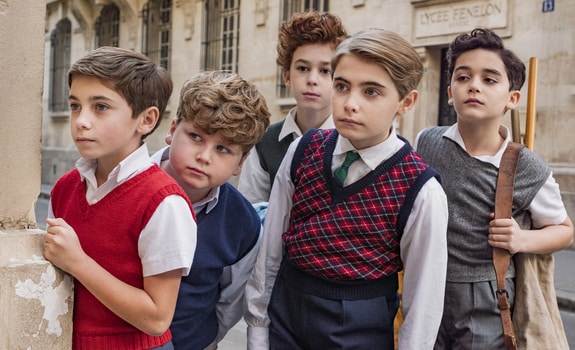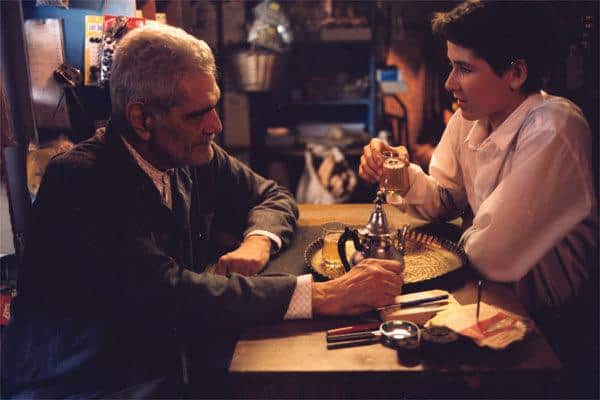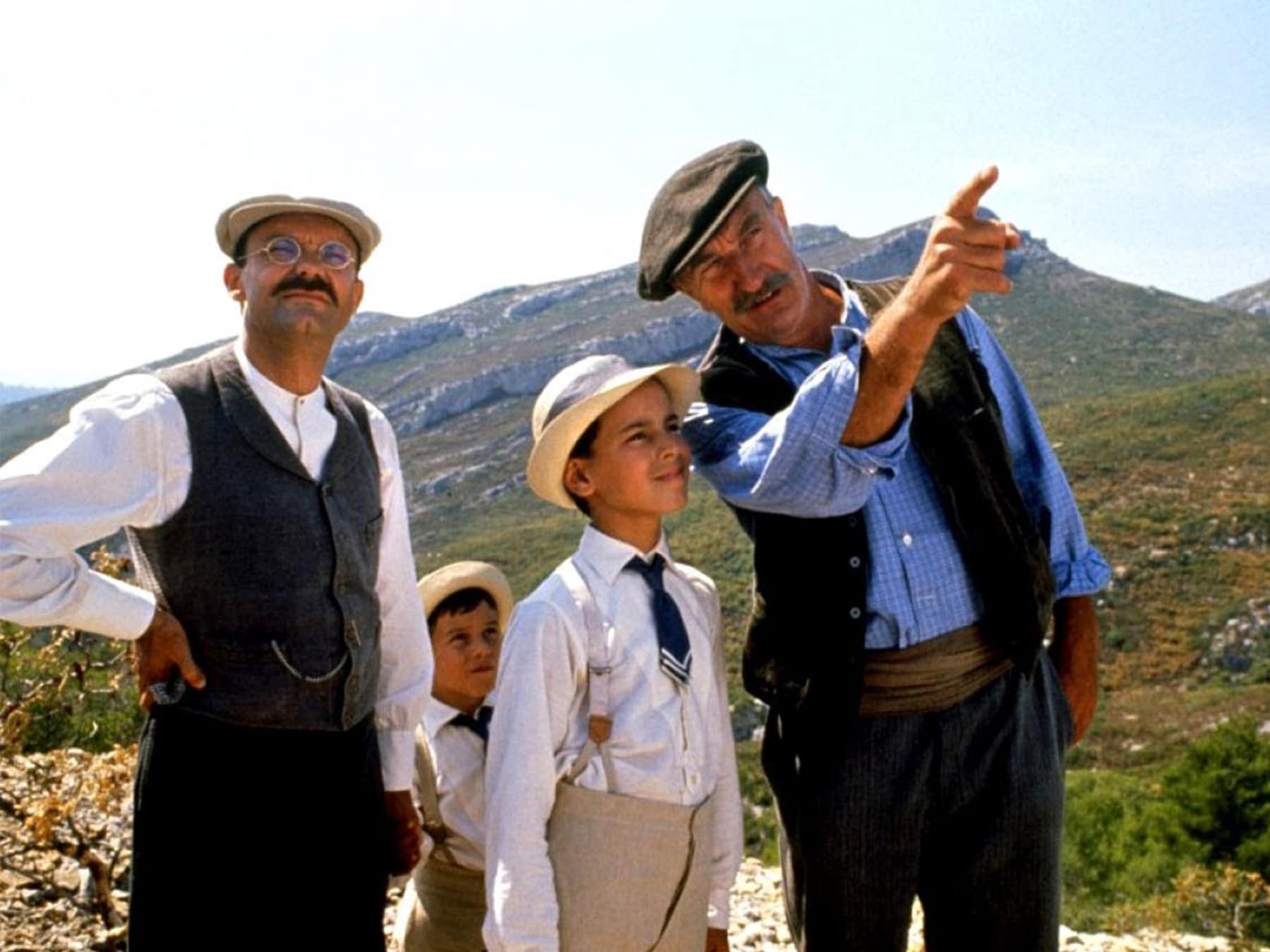
13 Movies for French Class
French movies are renowned for blending the art of filmmaking with superb narrative—making them a great teaching tool to use in your classroom.
French movies are incredibly diverse and offer a whole range of topics and difficulty making it easy to find movies for everyone.
I’ve put together this list of 13 excellent French films to use in your classroom and how to best use them for discussion.
Contents
- 1. Comme un Chef
- 2. Les Choristes
- 3. La Guerre des Boutons
- 4. Yves Saint Laurent
- 5. La Reine Margot
- 6. La Saveur du Palais
- 7. La Boum
- 8. La Famille Bélier
- 9. Les 400 Coups
- 10. Le Petit Nicolas
- 11. Monsieur Ibrahim et les Fleurs du Coran
- 12. La Gloire de Mon Père
- 13. Astérix et Obélix: Mission Cléopatre
- Tips on Using French Movies as an Efficient Teaching Tool
Download: This blog post is available as a convenient and portable PDF that you can take anywhere. Click here to get a copy. (Download)
1. Comme un Chef
“Comme un Chef” (The Chef) follows a painter who is passionate about cooking—but has no formal training— as he becomes the rising star of an assisted living community. Eventually, a well-known chef gets word about it and decides to give the painter a job as a chef, until their personalities clash and he fires him.
However, the chef lacks inspiration and needs serious help in order to not lose a star. Will he do the right thing and give the painter a chance?
Discussion Themes:
- What’s so special about French cooking?
Use this movie to discuss if French cooking deserves its prestigious reputation. You can also introduce your students to the history of French cuisine.
- Are Michelin Stars just hype?
Discuss with your student the phenomena of the Michelin guide. Do they believe that higher prices are justified and do they understand why chefs go through such pressure in order to obtain recognition from the Red Book?
2. Les Choristes
“Les Choristes” (The Chorus) is about successful orchestra conductor Pierre Morange when he returns to his hometown upon the death of his mother and finds the diary he wrote as a child. His notes take him back to late 1940s France, when Clément Mathieu, a music teacher, helped the unruly children at the austere boarding school where Morange was studying.
Acting against the strict headmaster, Mathieu brightens up the place and organizes a choir—eventually helping Morange and his classmates overcome their anger and fears through music.
Discussion Themes:
- What are the keys to a successful upbringing?
This poignant movie raises numerous questions about what constitutes a good education and a happy childhood. Be sure to put the movie into perspective and identify the cultural and historical elements at play before asking students to make their case.
- Is discipline the most effective method with children?
The ineffectiveness and injustice of discipline, as opposed to compassion and understanding, is one of the recurring themes in this movie. Discuss the value of both, and set up provisions on how to best frame their usages in context.
3. La Guerre des Boutons
“La Guerre des Boutons” (The War of Buttons) is set in the French countryside, where two rival gangs of children from the villages of Longeverne and Velran are constantly at war with each other, for no other motive than an ancestral peasant rivalry.
The children would have kept with tradition if it weren’t for one of the boys falling for a girl from the other village.
Discussion Themes:
- The countryside: A better place?
This movie provides an idealized vision of life in the countryside. Use this theme to draw attention to how life outside the big cities is often shown as extremely bucolic in France. Is this justified? What are your students’ thoughts on the matter? What do they believe are the pluses and minuses of living in a rural area? Where do they personally aspire to live?
- Forbidden love in art: The recipe to success?
This movie can pave the way for great discussions about the strength and appeal of forbidden love and its importance in art. Ask about the way it’s portrayed in “War of the Buttons,” and compare with other movies and novels they know. Then ask why it’s such an important artistic theme.
4. Yves Saint Laurent
This movie shares the incredible life story of fashion designer Yves Saint Laurent, showing his unconventional lifestyle and rise to fame.
Following his dismissal from the House of Dior, Yves Saint Laurent builds a formidable fashion empire with his once-lover and long-term business partner, Pierre Bergé. The film beautifully displays Saint Laurent’s life from his nightlife escapes, to his business and relationships.
Disclaimer: “Yves Saint Laurent” was rated R for sexual content by the Motion Picture Association of America. If your school has a strict policy about movie content, this movie may not be appropriate.
Discussion Themes:
- High fashion and luxury: Is France’s reputation justified?
The movie provides an interesting perspective into the world of high fashion in France. Start by asking students which designers they believe have most contributed to the clothing industry in France and worldwide. Is the “Made in France” label still as prestigious as it once was?
- Can fashion designers do more for society than creating clothes?
This movie is a great opportunity to discuss with your students the social and cultural impact of fashion designers throughout history. You can even compare Coco Chanel and YSL and discuss how these two French fashion designers helped with women emancipation.
5. La Reine Margot
“La Reine Margot” (Queen Margot) follows a young queen as she finds herself entangled in an arranged marriage during Europe’s religious wars between Catholics and Protestants.
Unsatisfied, she finds a new lover and tries to escape, only to be imprisoned by her powerful and ruthless family.
Discussion Themes:
- Should the monarchy make its comeback in France?
Discuss to what extent the monarchy has shaped French culture and society, starting with a brief timeline of the various regimes and an introduction to French history pre-revolution. Then, discuss the impact of the French Revolution in France and how the monarchy has effectively left an indelible mark on the French today.
- The case for women’s rights: What took them so long?
This movie depicts a society where women had little to no say in their own lifestyle. Go over a history of the women’s rights movement and compare its success in France, the United States and worldwide. What has been accomplished in 500 years and what remains to be done?
6. La Saveur du Palais
“La Saveur de Palais” (Haute Cuisine) demonstrates French politics and cuisine in one moving piece. Danièle Delpeuch, a humble chef from the South of France, becomes the private chef for former French President François Mitterrand.
Quickly enough, the president’s fondness for her cuisine stirs the jealousy from the Elysée Palace’s veteran chefs, who do what it takes to sabotage her work.
Discussion Themes:
- How does terroir influence French cooking?
We’ve all heard about terroir for wines, but do your students know that terroir extends far beyond that? Start the discussion by asking what they think this concept means, and to what degree they believe it has influenced French traditional cooking.
- What influences chefs today?
Ask your students what contributes to the creative process of culinary artists today. With the democratization of travel and visual platforms like Instagram, chefs are increasingly exposed to exotic flavors and products which can help promote their imaginative process.
7. La Boum
“La Boum” (The Party) is a Sophie Marceau classic from the 80s and explores the trials and tribulations of a young middle schooler in Paris who’s excited about the prospect of her first boum (party).
While it’s a bit dated for today’s teens, the feelings of hope and excitement have stood the test of time, and it provides a great way for students to pick up on some French slang.
Discussion Themes:
- What are the differences between old-fashioned slang and modern slang?
There are different types of slang. Maybe there’s some terms from the 80s that everyone knows, but doesn’t really use. Maybe there’s a more secretive type of modern slang. Show your students some of these slang terms and discuss if they would actually use any of them.
- How similar is Sophie’s experience to the typical American teenage experience?
Are there similar struggles? Are there differences in social interactions? Discuss how your students identified with Sophie and maybe where they didn’t.
8. La Famille Bélier
“La Famille Bélier” (The Bélier Family) follows the journey of a young girl who discovers her passion and talent for singing. The daughter of deaf parents, the girl feels responsible for taking care of her parents and their farm.
One day a music teacher finds Paula and realizes her talent so she invites her to attend a prestigious music school. The girl feels torn between her desire to sing and her responsibility to her parents.
This film’s a great way to look at bilingualism, as the characters speak both French and French sign language.
Discussion Themes:
- What are the difficulties of having a language barrier?
Have students discuss the difficulties that people encounter when trying to make themselves understood in a language they haven’t mastered. Ask students to use both their own experience and that of the people in the film as examples.
- What would you do in Paula’s situation?
Talk about how students would see this situation. Would they chase their passion? Would they stay home to take care of their parents? Open the door to discuss those feelings of duty and responsibility but the importance of autonomy and self-identity.
9. Les 400 Coups
“Les 400 Coups” (The 400 Blows) is a classic French coming-of-age film that demonstrates the movement of the French New Wave.
The film follows a young boy’s rebellion and search for independence. While the plot isn’t necessarily super exciting, the way that the boy is painted demonstrates a great appreciation for the reality of life.
It’s the first in the Antoine Doinel series of films, which follow the main character throughout his life, from childhood to adulthood.
Discussion Themes
- What do you think that Antoine does after the events of this film?
Follow this discussion with clips of some of the other Antoine Doinel films to confirm or contrast what students have written.
- Do you think that the mother made the right choice sending Antoine away?
Have students discuss if this was a way to really help him. How do they think Antoine would be affected by this in the future? Would they have done something different?
10. Le Petit Nicolas
This film unites several of the “Petit Nicolas” (Little Nicolas) short stories into a full-length feature film exploring the childhood of Nicolas, an adventurous little boy.
It’s likely that some of your students have heard of this series as it is an extremely popular children’s story with several books and shows. It’s a fun, lighthearted movie that can still teach your students a great deal of French.
Discussion Themes
- How does the movie compare to the book?
This one requires you to have them also read a few of the “Petit Nicolas” stories, but it’s a great way to have your students practice comparison and analyzation of the movie.
- Which scene was your favorite scene and why?
The film features several comedic scenes, so this question will allow students to practice forming sentences that talk about their preferences.
11. Monsieur Ibrahim et les Fleurs du Coran
“Monsieur Ibraham et les Fleurs du Coran” (Mr. Ibrahim and the Flowers of the Coran) features the encounter of a young French boy, Momo, and the local grocery store owner, Monsieur Ibrahim.
Mr. Ibrahim teaches Momo about his own culture and religion and eventually takes him to Turkey. Monsieur Ibrahim dies there, but Momo takes over his grocery store and embodies the respect and love that his mentor taught him.
Discussion Themes:
- How does the sharing of culture build relationships?
This will open students up to appreciating the importance of sharing culture and help them reflect on how they use culture as a source of connection in their own relationships.
- What elements of your own culture would you want to share with someone?
This once again will give students the tools to using culture as a way to grow their relationships as well as help them identify which aspects of their culture they appreciate the most.
12. La Gloire de Mon Père
“La Gloire de Mon Père” (The Glory of My Father) is based on Marcel Pagnol’s autobiographical book of the same name, which delves into his childhood in the south of France during the early 20th century.
The young Marcel attempts to realize his father’s dream of exploring the rugged countryside and experiences his own sadness at summer’s end when they must return home.
Discussion Themes
- Why do you think Marcel was so determined to live out his fathers dreams?
This is a good way for students to explore the motivation of Marcel and really why he did what he did.
- What are some of the dreams that you have? How will you accomplish them?
This can help students identify their own goals and share them with the class. It also helps them explore the conditional expressions j’aimerais (I would like) and je voudrais (I would like).
13. Astérix et Obélix: Mission Cléopatre
Astérix and Obélix are the beloved Gaulish main characters of a popular comic book series in France. They’ve also become the titular characters in a series of movies, including “Astérix et Obélix: Mission Cléopatre” (Astérix and Obélix: Mission Cleopatra), where they help an Egyptian architect build a beautiful palace for Julius Caesar.
Discussion Themes:
- What puns did you notice in the movie?
Each of the character names in this series is a jeu de mot (play on words): Astérix, for example, comes from astérisque or asterisk, whereas Idéfix comes from idée fixe, or “fixed idea,” a philosophical concept whereby people resist any attempt to change a specific idea or tenant they hold. Ask students to try to identify some of the other jeux de mots in the film!
- What did you notice about French humor?
This film contains multiple well-known French comedians and is a well known French comedy. What kinds of humor were used? How does French humor compare to English humor?
Tips on Using French Movies as an Efficient Teaching Tool
Make it a routine
Videos stimulate listening skills and develop understanding in context. For this to be effective, it’s best to incorporate it as part of your regular teaching curriculum—at least once a week. The idea is to maximize exposure and help students gain familiarity with the French pronunciation and spoken language without traveling to France.
Use subtitles strategically
There’s a balance in using subtitles. Students need to challenge themselves, but still need to make the most out of the movie they watch.
Try playing a scene first without subtitles so students have to focus on listening and comprehending what’s being said. Then you can replay the scene with French subtitles. Encourage students to take notes on any unfamiliar words so they can find the meaning later.
If after the French subtitles, students still don’t understand what’s going on, you can also replay the scene with English subtitles.
Replay when it’s useful
Replays can be incredibly useful, but they can also be incredibly boring. If you’re going to use replays, be sure to do it in a way that will introduce fresh perspective.
Rather than replay the same scene two or three times, make sure to gradually introduce content that can help students make sense of what they just watched. Also be sure to interact with your students using the replay. Ask cultural and artistic questions. Clear up any confusion they have about words or phrases.
Encourage your students to watch movies at home
Learning French shouldn’t be limited to the classroom. For classes to be effective, students should continue their studies even when formal lessons are over. Movies are a great way to show them that learning French doesn’t have to be a chore—it can be incredibly fun and enriching, too.
To maximize impact, send them a link to the video that you’ve watched in class and ask them to review and take notes at their leisure. This will be an occasion to review known content.
Using this complete selection of the most captivating French movies and our discussion points, I have no doubt that your students are in for a great time. So, what are you waiting for? Start watching already!
Download: This blog post is available as a convenient and portable PDF that you can take anywhere. Click here to get a copy. (Download)

